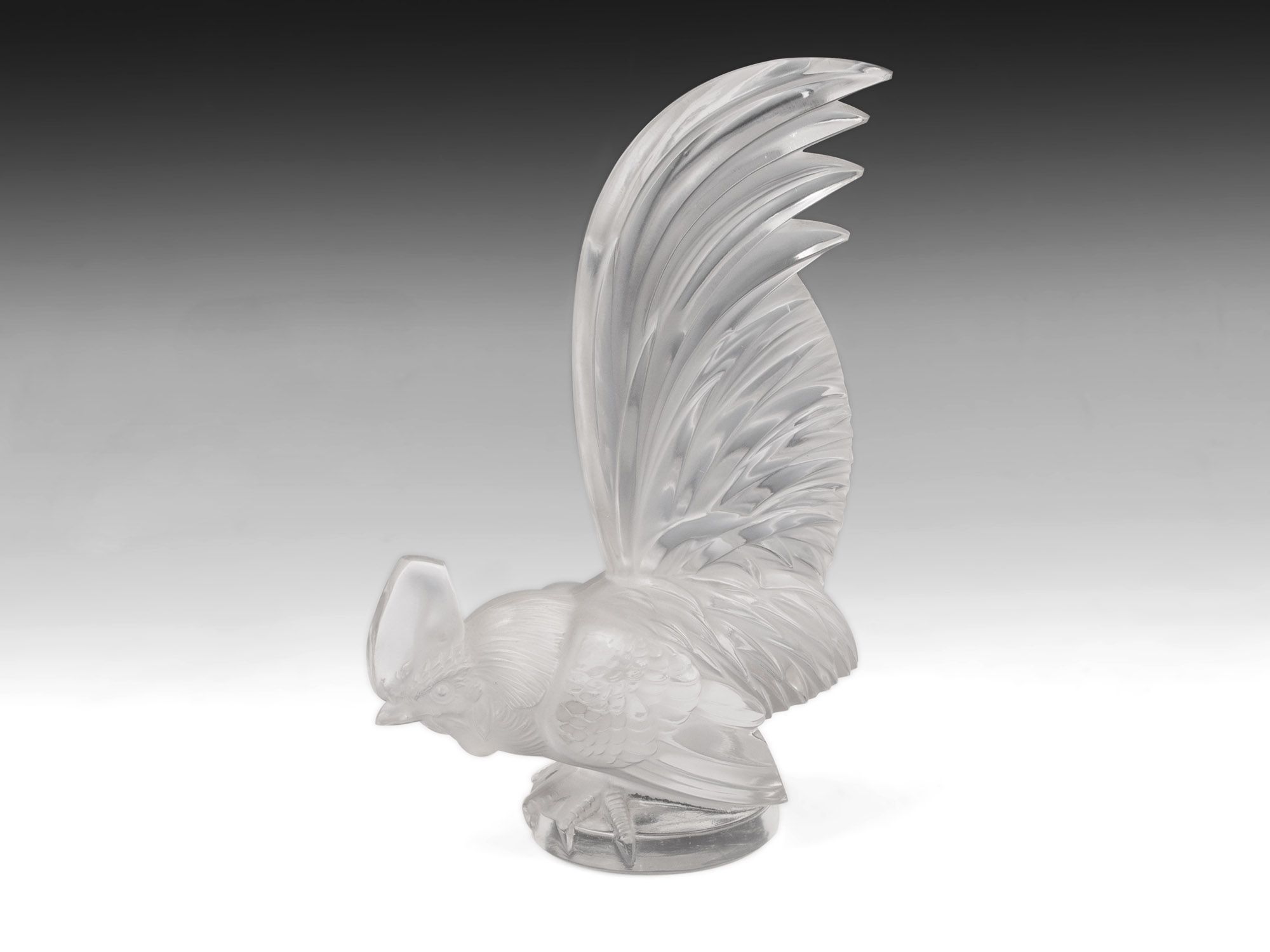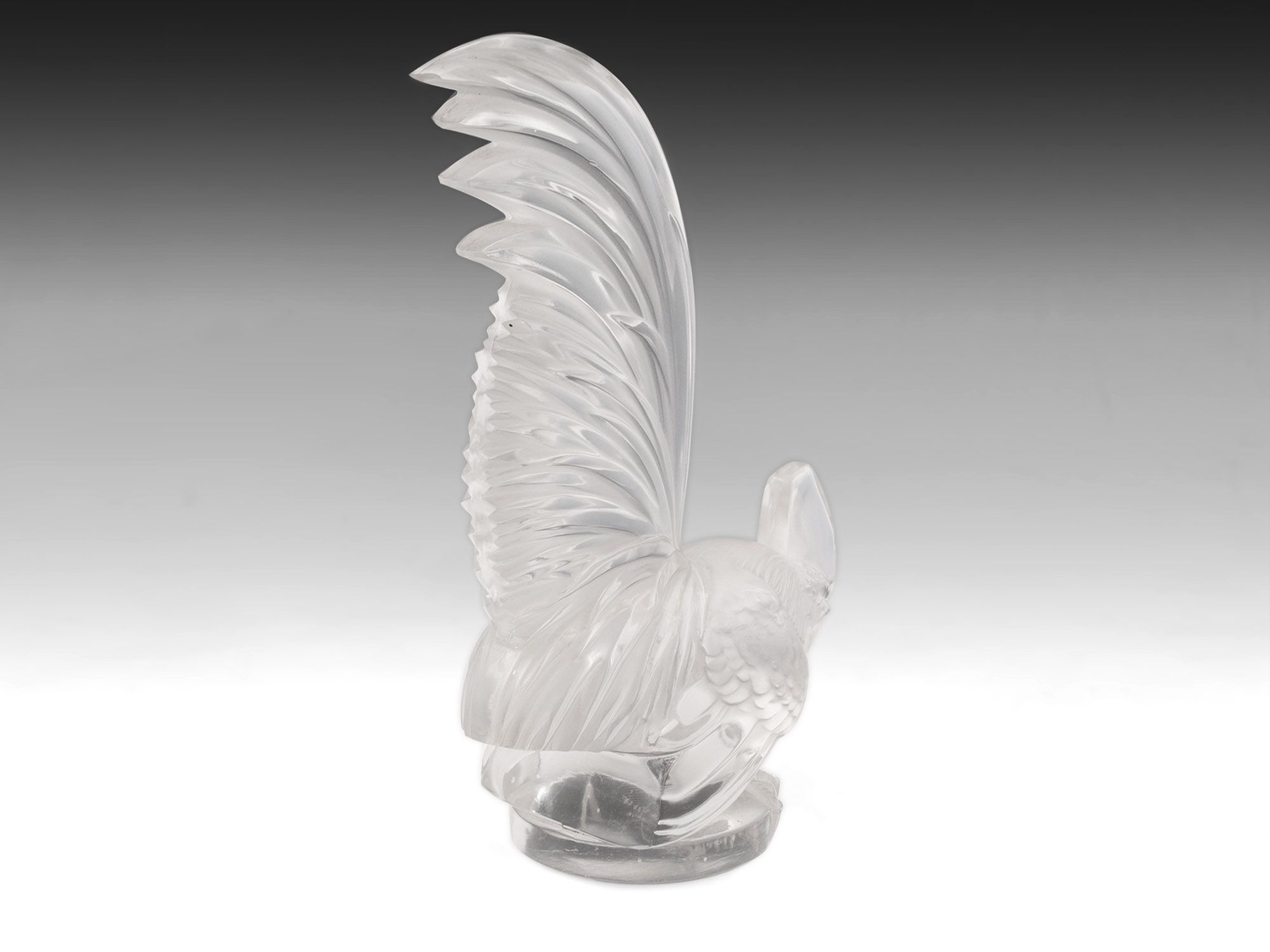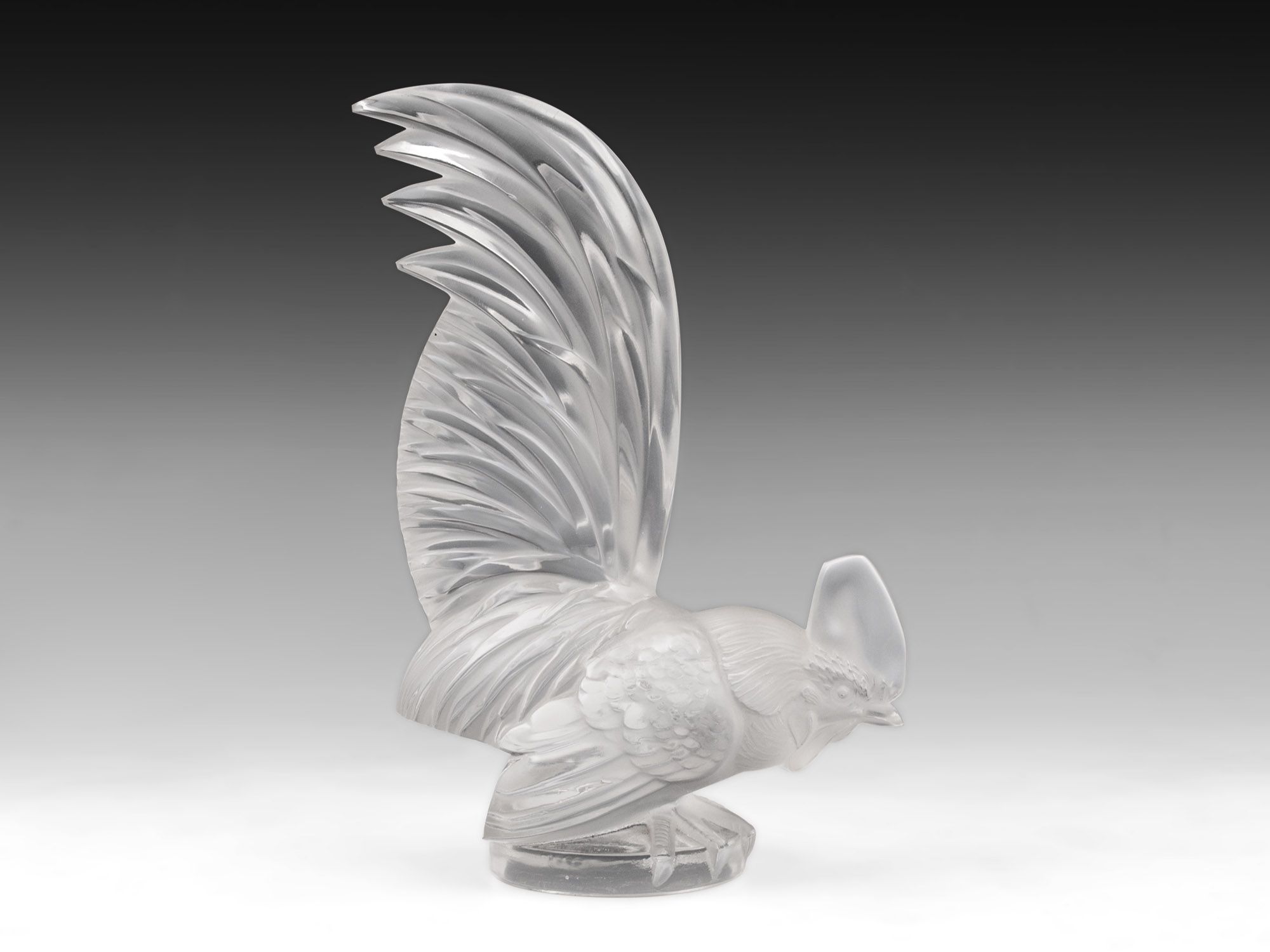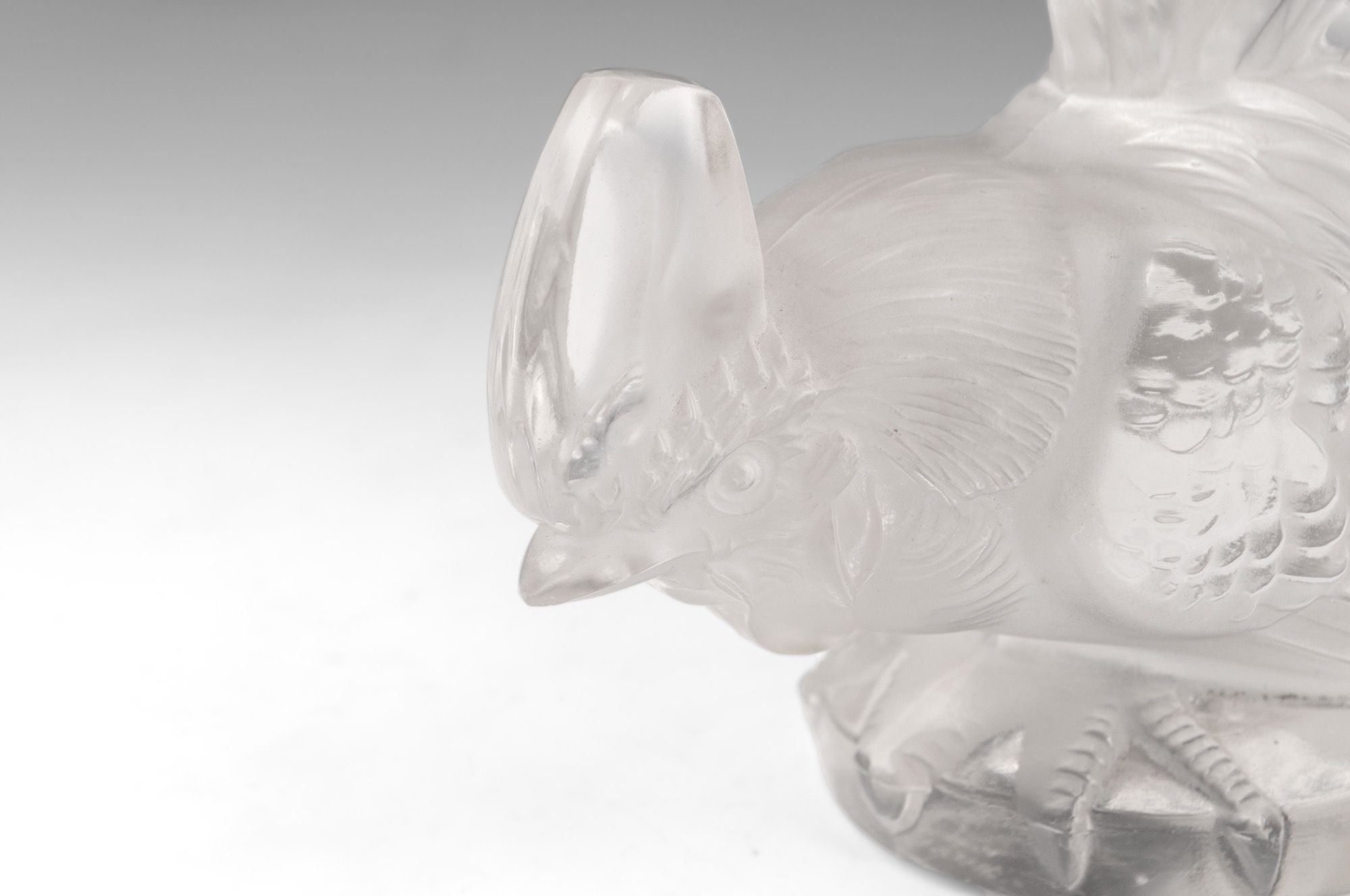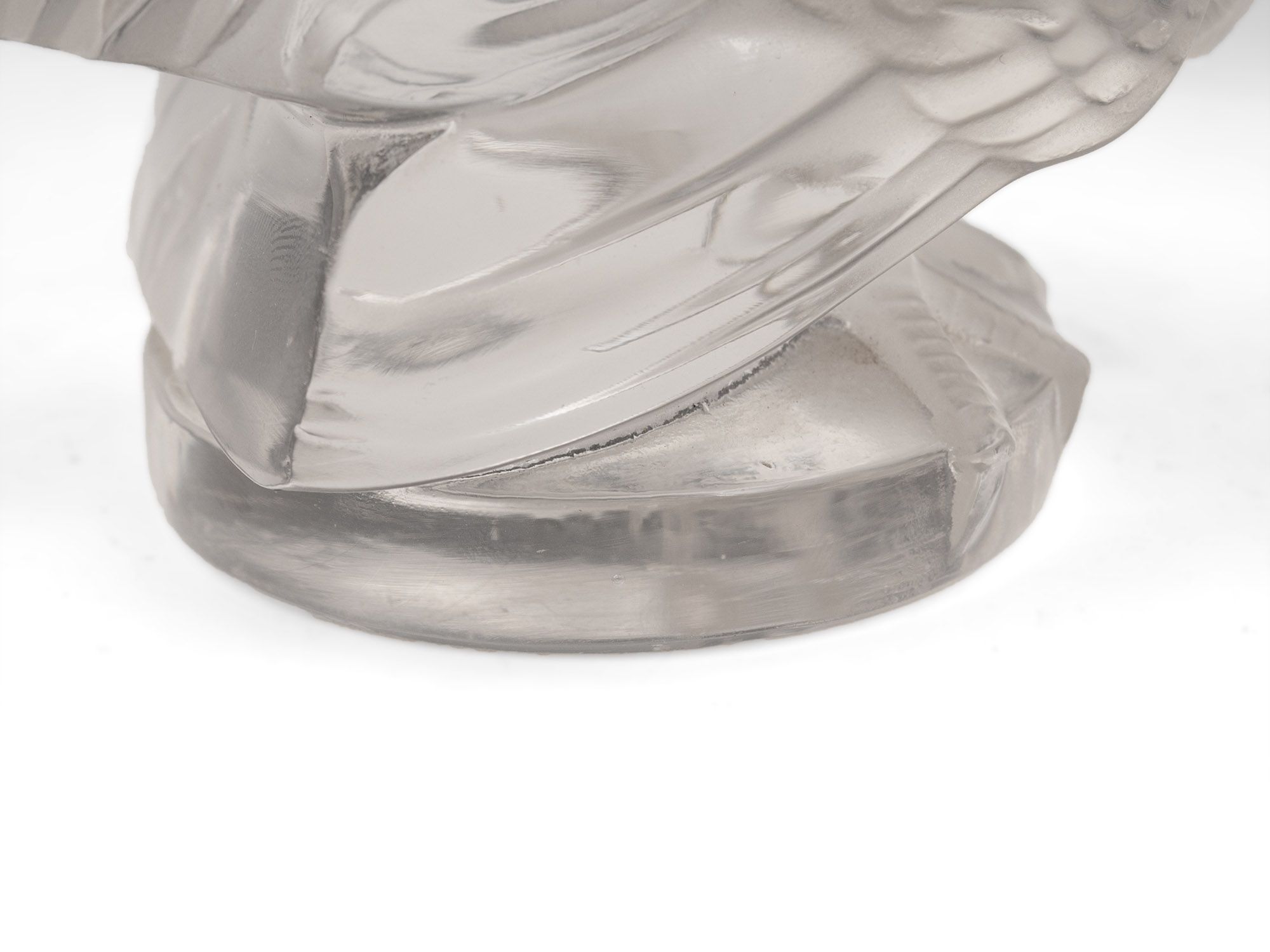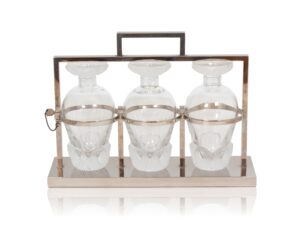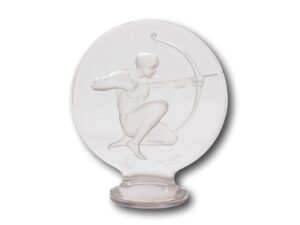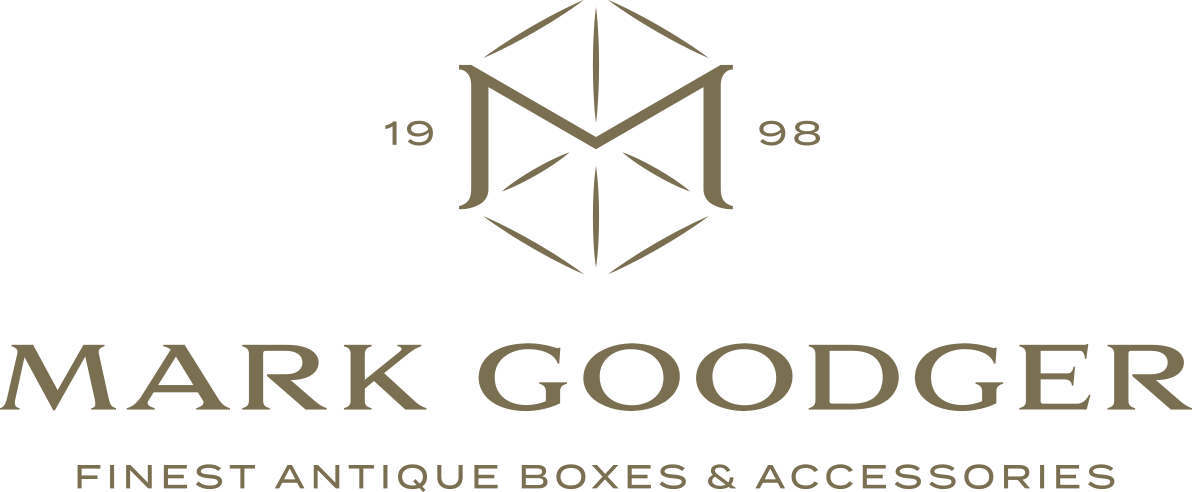Lalique Coq Nain Bantam Car Mascot
SOLD
Lalique Coq Nain / Cockerel car mascot. Model Number: 1135 These were originally made as car hood ornaments in the 1920s by the famous glass make René Jules Lalique, who started a company using his own name, which still creates... Read More
| Dimensions | 15.5 × 6.5 × 20.5 cm |
|---|---|
| Medium | |
| Country | |
| Literature | |
| Exhibition | BADA, LAPADA, ANTIQUES FOR EVERYONE, BLENHIEM PALACE CADA, OLYMPIA LONDON |
| Collection | |
| Condition | |
| SKU | 291250 |
Description
Description
Lalique Coq Nain / Cockerel car mascot. Model Number: 1135
These were originally made as car hood ornaments in the 1920s by the famous glass make René Jules Lalique, who started a company using his own name, which still creates fine glassware today.
Etched on the base is: ” Lalique France ”
All our items come with an authentication certificate with image, care instructions and separate invoice for insurance purposes. On top of this, our items come with 14-day no-quibble money-back guarantee and are all fully insured for when shipping.
Master glassmaker René Lalique (1860-1945) created his stunning car mascot (bouchons de radiateur) designs
between 1925 and 1931. Their production ceased in 1940, a year after WWII had begun. René’s factory, Verrerie
d’Alsace, in Wingen-sur-Mode was forced to close following German occupation of the Alsace region. René sadly
passed away in May 1945, so did not live to see the end of the war, nor the subsequent re-opening of the factory by his
son Marc. Marc resumed production of his father’s famous mascot designs using the original steel moulds which had
the fortune of being preserved, in spite of the war. These post-war productions, however, were sold as paperweights and
desk accessories.
From the late 1800s, motor car production, design and technology quickly gathered pace. The invention of the
Internal Combustion Engine was to transform motoring forever. A more reliable and user-friendly engine, it required
cooling to eliminate overheating; this was achieved via a radiator topped with a cap, its grille visible to the front of the
car.
Initially caps were just caps! Simply a plain, functional component of the car radiator. But as motoring
evolved into a more glamorous affair, the car became the ultimate status symbol, with owners desiring more options
for decoration and personalisation, fuelling demand for a car mascot, or hood ornament. The first known car mascot
is believed to have been the brainchild of John Douglas-Scott Montagu, 2nd Baron Montagu of Beaulieu, British
politician, and motoring enthusiast. Around 1899 he commissioned the sculptor Charles Sykes to create a bronze
figure of St Christopher for display on his 12HP Daimler. Sykes later became famous for designing Lord Montagu’s
further commission in 1909 of the iconic and widely known Spirit of Ecstasy mascot for his Rolls Royce Silver Ghost.
The radiator cap was an ideal medium for artistic and decorative development and manufacturers were turning
this little object into a much sought-after accessory in its own right. Starting with being topped with manufacturers’
emblems and logos, they evolved into more elaborate designs, the demand driven by the more wealthy car owner with a
desire to show off their status, affluence and individual style.
Catching on to the trend, René Lalique embarked on his creation of beautiful glass mascots, epitomising the
style and grace of this exciting era. With a passion for the female form, flora and fauna, his designs came in various
finishes, including clear, frosted, opalescent or coloured glass.
His first official car mascot design, produced in August 1925, was the ‘Cing Chevaux’ (Five Horses),
commissioned by motoring magnate André Citroën. This was possibly to celebrate André’s new installation of the
imposing and spectacularly illuminated Citroën emblem on the Eiffel Tower. Or perhaps to promote the renaming of
his Type C ‘5HP’ car (Horsepower) to ‘5CV’ (Cheval Vapeur), following the change in calculation of taxable engine
power in France.
To meet the demands of a fast-expanding market, Lalique commissioned the Breves Gallery in London to
develop a purpose-built mascot mount for cars – a very challenging task due to the delicate nature of René’s beautiful
creations. Comprising metal collars and a rubber washer, the mounts also had various ‘upgrade’ options. There
was the option to illuminate your mascot, achieved by using a mount incorporating a bulb and plug that could be
connected directly to the car wiring, or battery operated. Coloured illumination could also be selected, the effect
created by use of a thick plastic filter, sold in a variety of colours. But perhaps the most exciting and innovative option
was speed-variable illumination …. achieved via a dynamo-fitted mount – your mascot would glow brighter the faster
you drove!
The demise of the glass car mascot occurred following newly imposed safety restrictions in the late 1940s. Huge
transformations in car design in the 1950s eventually brought the fashion for all types of car mascot to an end.
We are extremely proud to present this collection of René Lalique’s beautiful mascots which embody the style
and glamour of what was undoubtedly motoring’s most exciting era. Today they are works of art in their own right,
stunning, decorative accessories as well as a worthwhile investment.
Additional information
Additional information
| Dimensions | 15.5 × 6.5 × 20.5 cm |
|---|---|
| Medium | |
| Country | |
| Literature | |
| Exhibition | BADA, LAPADA, ANTIQUES FOR EVERYONE, BLENHIEM PALACE CADA, OLYMPIA LONDON |
| Collection | |
| Condition | |
| SKU | 291250 |
